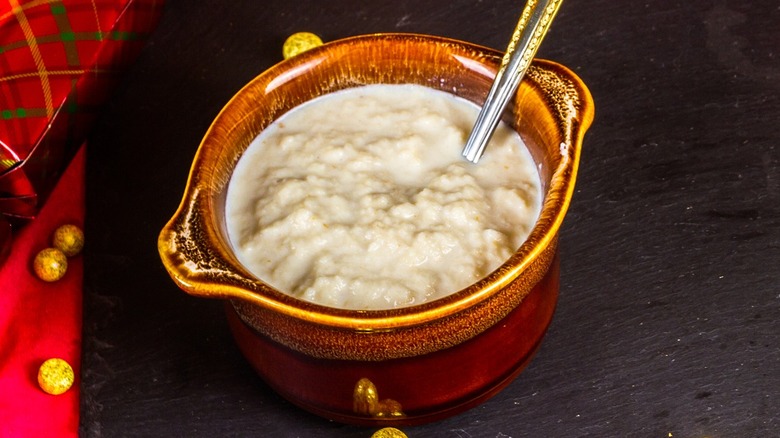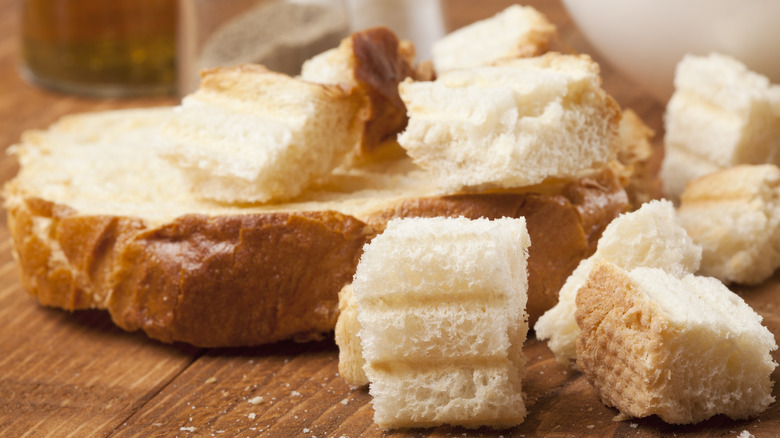Christmas Bread Sauce Is A Relic Of Medieval Times
The holidays are full of traditions, old and new. Many of these traditions are unique to families, but plenty have more historical roots. Take, for example, the reason why we eat candy canes at Christmas. This candy with German roots was made to look like a shepherd's staff and was given out to children during church services. Unlike the candy cane, however, which has become a symbol of Christmas, some food-related traditions have dwindled into non-existence with each passing Christmas.
One such fading food relics is Christmas bread sauce, which hails from the medieval era. Contrary to what you might expect, it was not a sauce for bread, but rather a sauce made from bread crumbs or scraps. This gravy-like condiment features stale bread simmered with milk and infused with the spices and flavors of onions, cloves, garlic, and bay leaves. Although uncommon in American households, bread sauce can be found during Christmas on the tables of many British households. Best of all, bread sauce can accompany just about everything else on the table. A traditional British Christmas dinner might include turkey, roasted potatoes, Brussels sprouts, and cranberry sauce. Like American gravy, it can add complexity to each of these dishes and complement anything that lacks flavor.
The thickening power of leftover bread
Bread sauce can be traced back over 500 years to medieval times when using bread to thicken all kinds of stews and sauces was fairly common. Whereas modern chefs would make a roux from flour and butter to thicken certain dishes, soaking and straining leftover bread can achieve a similar effect. Not only was bread readily available, but it was easy to transform into any number of consistencies that could help fill out the spread on a medieval banquet table. Meats took center stage on these tables, but not without accompanying soups and sauces, as medieval medicine believed a meal's temperatures and textures should all maintain a certain balance. Thick bread slices were also used as "trenchers," or plates to serve food upon. The wealthy wouldn't eat these slices, however; instead, they gave the flavor-soaked bread to the poor.
In the present day, medieval bread sauce survives on Christmas dinner tables across Britain. The reason for its survival over these many years may be credited to the dish's simplicity, though food historian Annie Gray notes that bread sauce's popularity is declining. This could be due to a gravitation towards gravy, or more simply, the notion that lumpy bread sauce is too unsophisticated for the Christmas table (via NPR). Regardless, bread sauce remains a comforting Christmas tradition for many.

